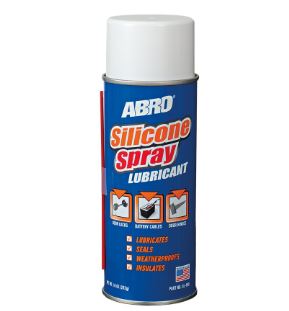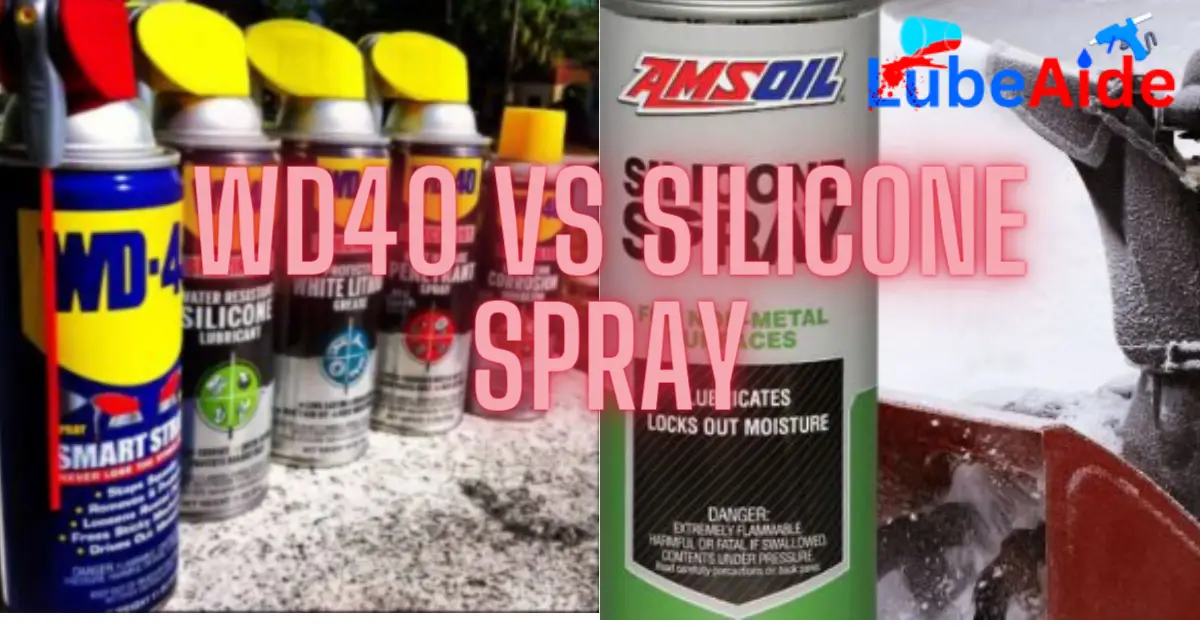WD-40 and silicone spray are two popular lubricants used for various purposes. While both products are designed to reduce friction and protect surfaces, they have different properties and are suitable for different applications. In this article, we will compare the features and benefits of WD-40 and silicone spray to help you choose the right product for your needs.
WD-40 is a multi-purpose lubricant that has been around for over 60 years. It is known for its ability to penetrate rust and dissolve adhesives, making it a popular choice for mechanics, DIY enthusiasts, and homeowners. WD-40 is also used to protect metal surfaces from corrosion and to lubricate moving parts. On the other hand, silicone spray is a synthetic lubricant that is made from silicone oil and other additives. It is non-reactive, water-resistant, and has a high-temperature tolerance, making it ideal for use in high-performance environments.
What is WD40

WD40 is a popular multi-use product that has been around for over 60 years. It is a household name and is widely used for various purposes. WD40 is a petroleum-based product that is made up of a mixture of lubricating oils, solvents, and additives. It is designed to lubricate, protect, and clean metal surfaces.
WD40 is a versatile product that has many uses. It is commonly used as a lubricant to reduce friction and wear on moving parts. It can also be used to protect metal surfaces from rust and corrosion. In addition, WD40 can be used to clean and remove dirt, grease, and grime from metal surfaces.
One of the unique features of WD40 is its ability to displace water. This makes it an excellent product for use in wet or damp environments. It can be used to protect metal surfaces from water damage and to remove water from electrical components.
Overall, WD40 is a useful product that can be used for a variety of purposes. It is easy to use and is available in a variety of sizes and forms, including aerosol cans, spray bottles, and bulk containers. However, it is important to note that WD40 is not a lubricant in the true sense of the word and should not be used as a substitute for a proper lubricant in high-stress applications.
What is Silicone Spray

Silicone spray is a type of lubricant that is commonly used to reduce friction between two surfaces. It is made up of silicone oil, which is a synthetic oil that is derived from silica, a naturally occurring mineral. Silicone spray is typically sold in an aerosol can, which makes it easy to apply to hard-to-reach areas.
One of the key benefits of silicone spray is that it is highly resistant to water and moisture. This makes it an ideal lubricant for use in wet environments, such as marine applications or outdoor equipment. Silicone spray also has a high level of heat resistance, which makes it suitable for use in high-temperature environments.
Silicone spray is often used as a general-purpose lubricant, but it can also be used for specific applications. For example, it is commonly used to lubricate rubber gaskets and seals, as well as plastic parts. It can also be used to protect electrical components from moisture and corrosion.
Overall, silicone spray is a versatile lubricant that offers a number of benefits over other types of lubricants. It is highly resistant to water and heat, making it suitable for a wide range of applications.
WD40 vs Silicone Spray: Differences
When it comes to lubricants, two popular options are WD40 and silicone spray. While both are designed to lubricate and protect, there are some key differences between the two.
Water Displacement
WD40 is primarily known for its water-displacing properties. It is designed to quickly penetrate and displace water, making it an excellent choice for protecting metal surfaces from rust and corrosion. Silicone spray, on the other hand, is not designed for water displacement and may not be as effective in protecting metal surfaces from water damage.
Lubrication
Both WD40 and silicone spray are effective lubricants, but they have different properties. WD40 is a thin, lightweight oil that is designed to penetrate and lubricate moving parts. It is particularly effective at reducing friction and wear in metal-on-metal applications. Silicone spray, on the other hand, is a thicker, more viscous lubricant that is better suited for plastic and rubber parts. It is also less likely to attract dirt and dust than WD40.
Penetration
WD40 is designed to penetrate quickly and deeply into tight spaces, making it an excellent choice for freeing stuck or rusted parts. It is also effective at removing grease, grime, and other contaminants from metal surfaces. Silicone spray, on the other hand, may not penetrate as deeply as WD40 and may not be as effective at removing contaminants.
In summary, while both WD40 and silicone spray are effective lubricants, they have different properties and are best suited for different applications. WD40 is ideal for water displacement, reducing friction and wear in metal-on-metal applications, and penetrating tight spaces. Silicone spray, on the other hand, is better suited for lubricating plastic and rubber parts and may be less likely to attract dirt and dust.
When to Use WD40
WD40 is a versatile lubricant that can be used for various purposes. Here are a few instances when using WD40 is recommended:
- Removing rust and corrosion: If you have metal tools or machinery that have rusted or corroded, WD40 can be used to remove the rust and corrosion. Simply spray the affected area with WD40 and let it sit for a few minutes. Then, use a cloth or brush to wipe away the rust and corrosion.
- Loosening stuck bolts: If you have bolts that are stuck and won’t budge, WD40 can be used to loosen them. Spray WD40 on the bolt and let it sit for a few minutes. Then, use a wrench to turn the bolt.
- Cleaning and protecting tools: WD40 can also be used to clean and protect tools. Spray WD40 on the tool and wipe it down with a cloth. This will help to remove any dirt or grime and protect the tool from rust and corrosion.
- Preventing squeaks and creaks: If you have doors or windows that squeak or creak, WD40 can be used to lubricate the hinges and prevent the noise.
It is important to note that while WD40 is a great all-purpose lubricant, it should not be used on certain materials such as rubber or plastics. In those cases, silicone spray would be a better option.
When to Use Silicone Spray
Silicone spray is a versatile lubricant that can be used in a variety of situations. Here are a few instances where using silicone spray may be beneficial:
- Waterproofing: Silicone spray creates a protective barrier that repels water and moisture. It can be used to waterproof a variety of surfaces, including tents, shoes, and outdoor gear.
- Preserving Rubber and Plastic: Silicone spray can help prevent rubber and plastic from drying out and cracking over time. It can be used on door seals, gaskets, and other rubber and plastic components to extend their lifespan.
- Reducing Friction: Silicone spray can reduce friction between surfaces, making it useful for lubricating door hinges, locks, and other moving parts.
- Protecting Metal: Silicone spray can help protect metal surfaces from rust and corrosion. It can be used on tools, outdoor furniture, and other metal objects to help extend their lifespan.
It’s important to note that while silicone spray can be useful in many situations, it may not be the best choice for all applications. For example, it should not be used on surfaces that will come into contact with food, as it can be toxic if ingested. Additionally, it may not be as effective as other lubricants for high-temperature applications.
FAQ About WD40 vs Silicone Spray
When it comes to choosing between WD40 and silicone spray, people often have a lot of questions. Here are some of the most frequently asked questions:
What are the main differences between WD40 and silicone spray?
The main difference between WD40 and silicone spray is that WD40 is a multi-purpose lubricant that can be used for a variety of purposes, while silicone spray is primarily used for lubricating moving parts and protecting metal surfaces from corrosion. WD40 is also a better choice for loosening rusted parts, while silicone spray is better for preventing the accumulation of dust and dirt.
Can I use WD40 and silicone spray interchangeably?
While both WD40 and silicone spray are lubricants, they are not interchangeable. WD40 is a better choice for loosening rusted parts and protecting metal surfaces from corrosion, while silicone spray is better for lubricating moving parts and preventing the accumulation of dust and dirt.
Is WD40 or silicone spray better for waterproofing?
Neither WD40 nor silicone spray is ideal for waterproofing. While both can help to protect metal surfaces from moisture, they are not designed to provide a waterproof seal. For waterproofing, it is best to use a specialized sealant or adhesive.
Can WD40 or silicone spray damage plastic or rubber?
Both WD40 and silicone spray can damage plastic or rubber if they are not used properly. WD40 can cause some plastics to become brittle and can cause rubber to swell or degrade over time. Silicone spray is generally safer to use on plastics and rubber, but it can still cause some types of rubber to degrade over time. It is always best to test a small, inconspicuous area before using either product on plastic or rubber.
Final Thought
In the end, comparing WD-40 and silicone spray reveals distinct characteristics and applications that make them suitable for different purposes.
WD-40 is a versatile multi-purpose lubricant and penetrating oil that excels in various tasks. Its primary function is to displace moisture, prevent rust and corrosion, and lubricate moving parts. WD-40 is effective at loosening stuck or rusted components, providing temporary protection against moisture, and freeing up mechanisms. It is commonly used in automotive, household, and industrial applications.
Related Topics:
- Can You Lubricate Timing Belt
- transmission assembly lube alternative
- Car Parts That Need Lubrication
- How to Lubricate Steering Column
- How Much Engine Assembly Lube To Use
- How to Lubricate Sliding Windows
- Is Silicone Spray a Dry Lubricant
- Will Silicone Damage Car Paint
- How Do Automatic Lubrication Systems Work
- How to Lubricate Sliding Windows


